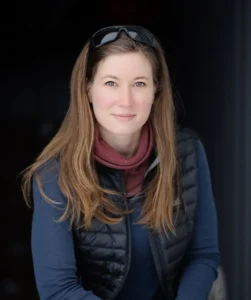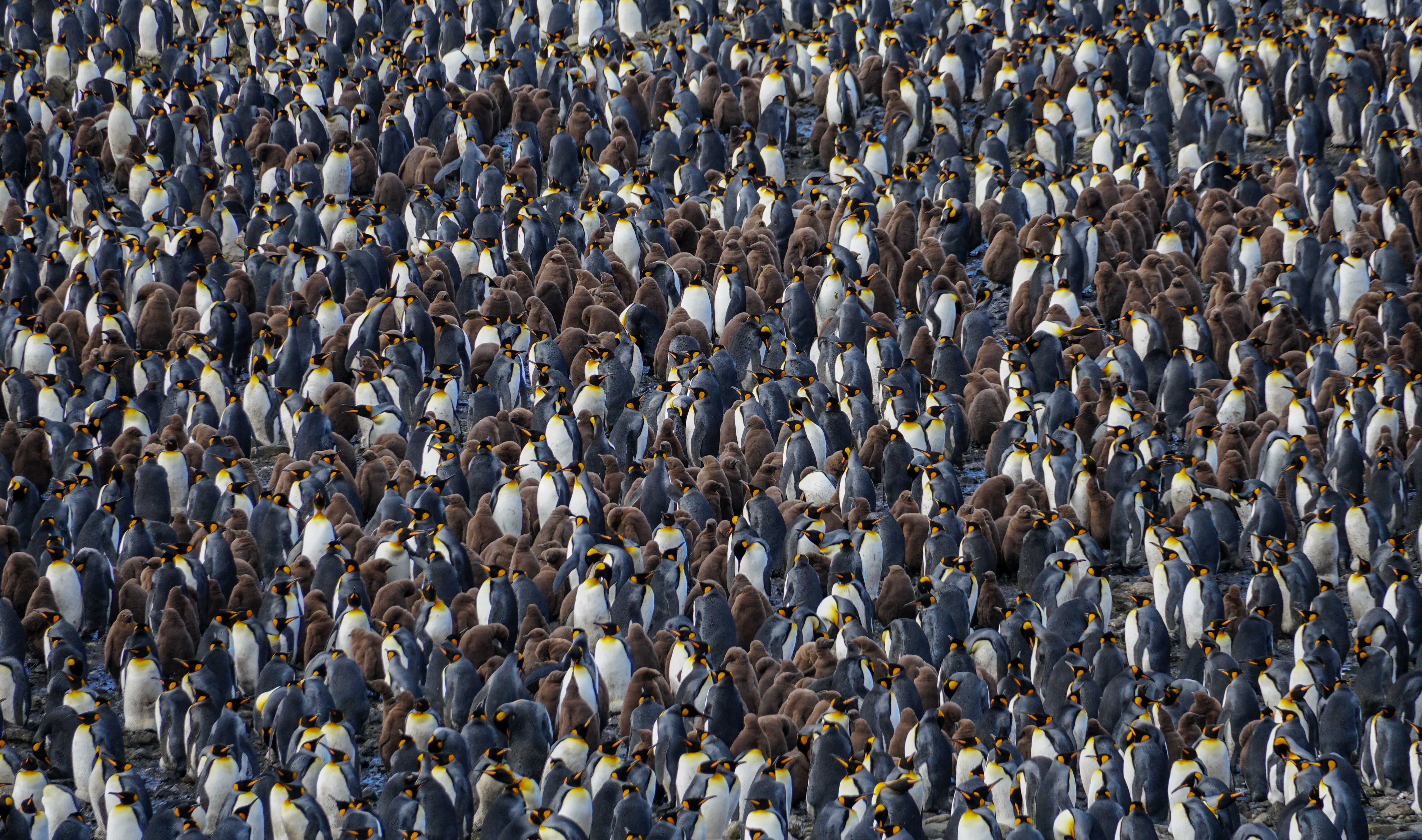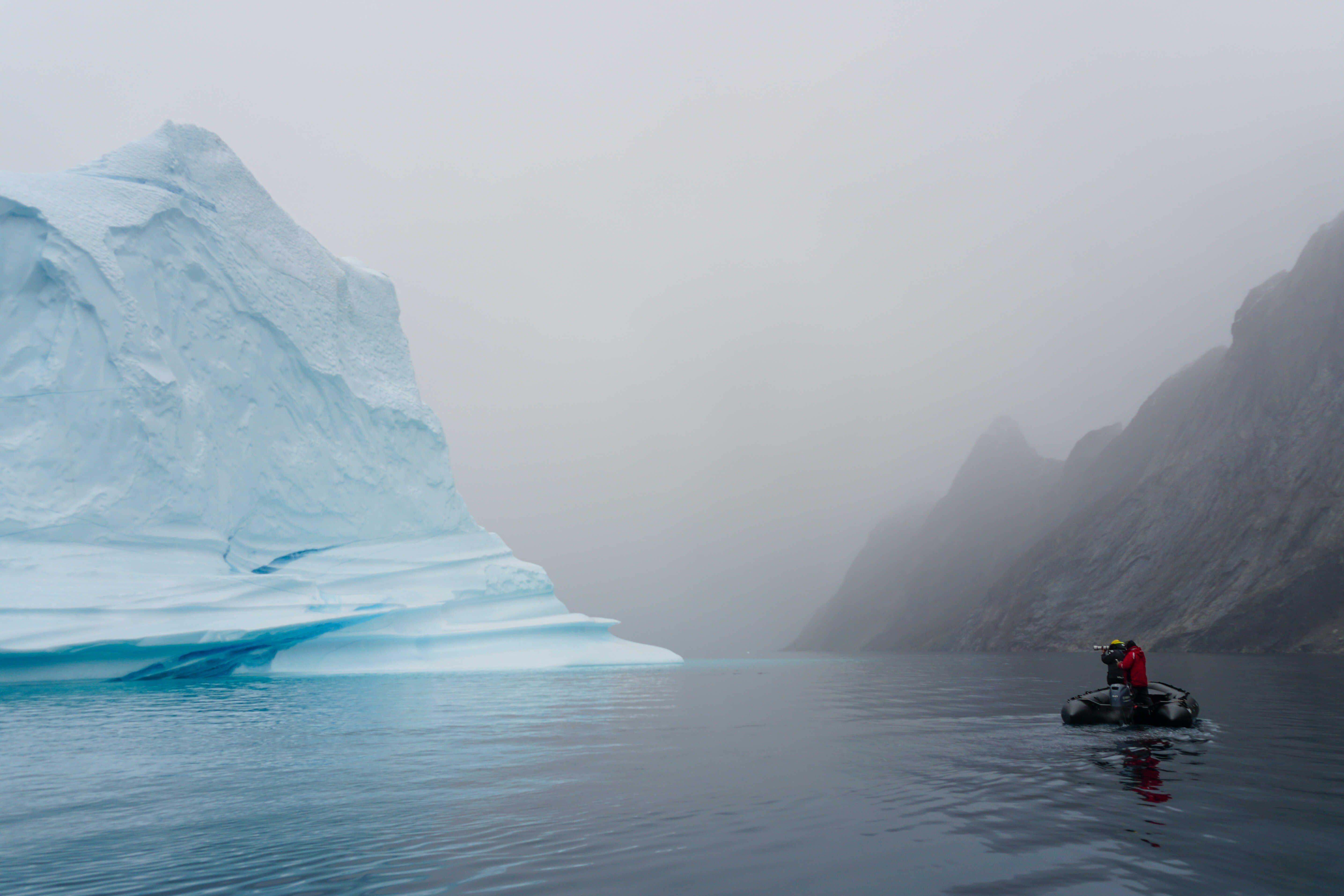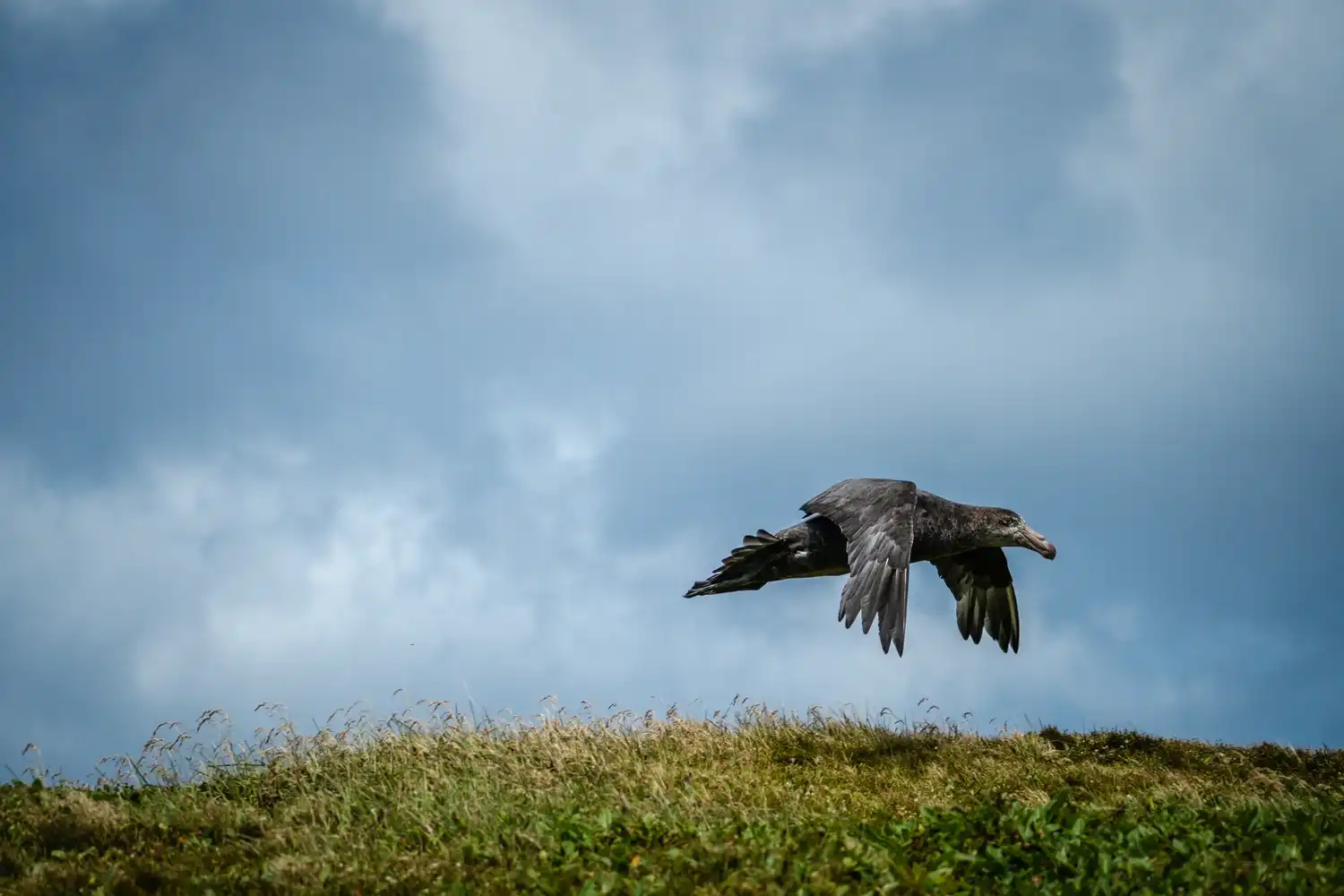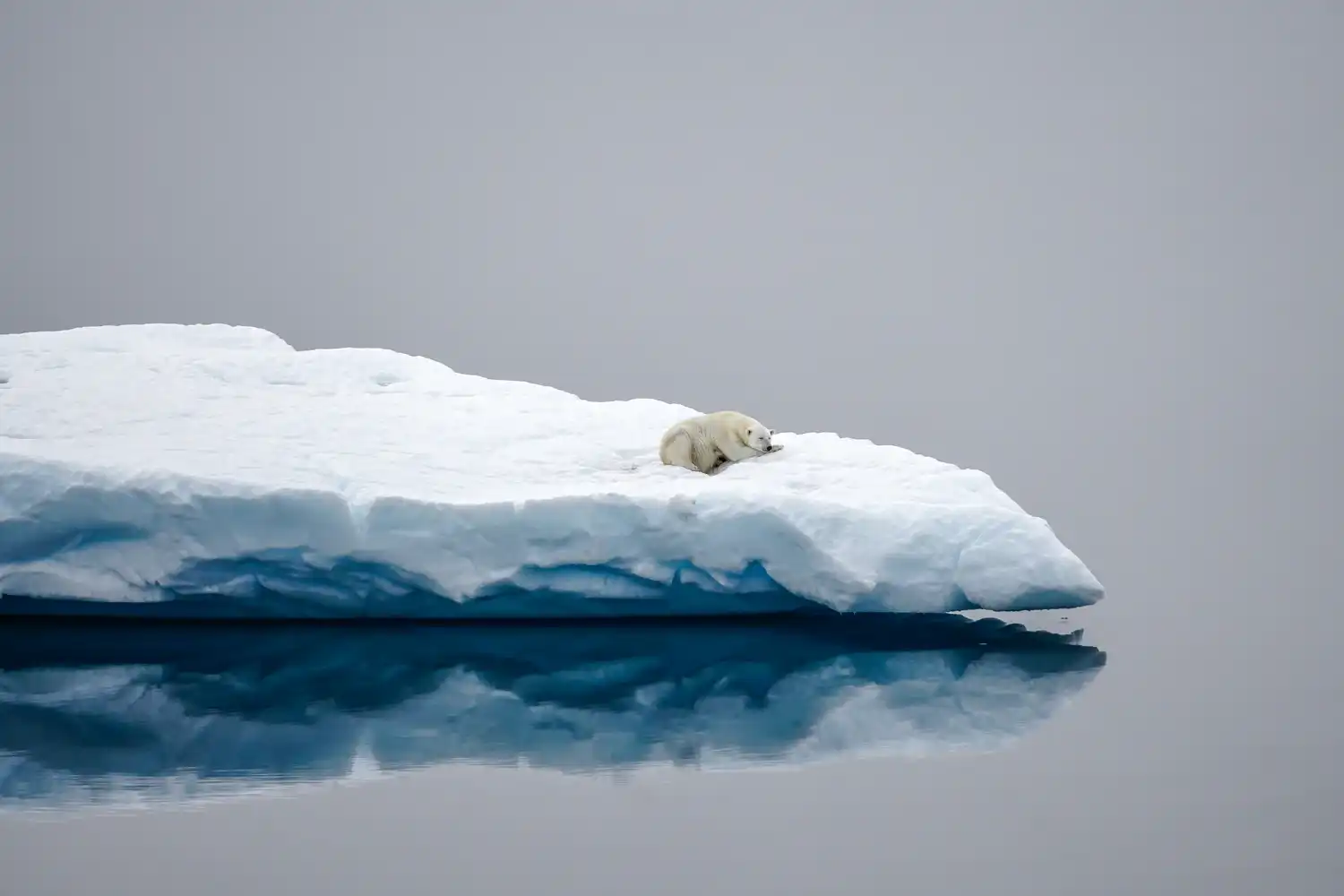Aviaaja Schlüter’s photograph Parents’ Sacrifice was selected as the winning image in Grid Photo Gallery’s inaugural open-theme contest. In a near-white Antarctic landscape, two adult emperor penguins shelter their chick with quiet devotion—a composition as stark as it is tender.
Drawn from dozens of international submissions, the image stood out for its emotional clarity, compositional restraint, and the story it tells about endurance and care in one of the world’s harshest environments.
In this interview, Aviaaja speaks with us about the moment behind the image, the experience of photographing in extreme cold, and the deeper themes that drive her work.
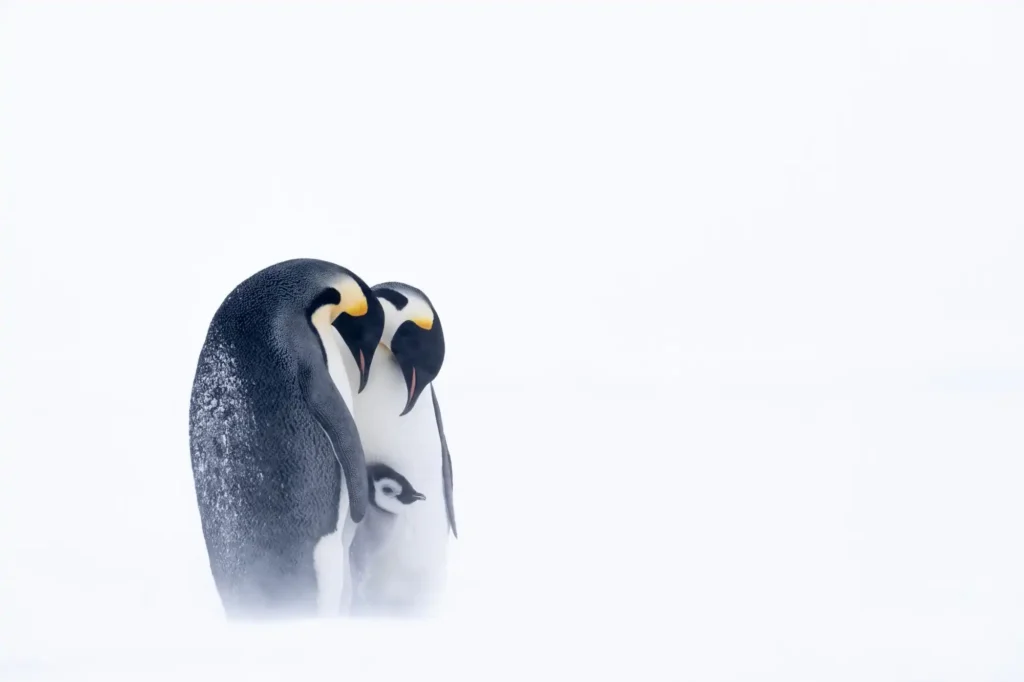
Q: Let’s start with you—can you tell us a bit about your background and how photography became part of your life?
A: My father has always been an avid photographer, and he also has a big interest in birds, so photography, being in nature, and appreciating the wildlife have always been a big part of my life. I’ve worked as a polar guide for over 10 years, and I’ve explored incredible parts of the Polar Regions through the years. My job is giving me unique opportunities to explore and photograph some really wild places on our planet.
“It’s about caring for one another and supporting the vulnerable by giving whatever we’re able to give—no matter what conditions we find ourselves in.”
Q: What first caught your eye about the scene that became Parents’ Sacrifice, and how did you know it was the moment to capture?
A: I was in all my puffy gear, goggles, big gloves, and big boots, walking through the cold and windy weather to get to the emperor penguin colony from our camp on the sea ice. Here I found emperor parents sheltering their young ones with their bodies to give them cover from the cold wind. It felt so powerful, seeing these birds out here in the ice desert, sacrificing everything they have to protect their chicks in the wild weather. My own struggles in the cold and the harsh wind felt insignificant compared to the emperor penguins’ – I could at least go inside a warm tent after a couple of hours and indulge in a warm meal.
Q: The emotion in the photograph feels intimate despite the vast, harsh environment—what were you hoping to convey with this image?
A: When I saw the penguin family, I wanted to capture this soft and fragile moment between the parents and their chick. It felt like a universal emotion—the bond between them is something we, as humans, can also relate to. It’s about caring for one another and supporting the vulnerable by giving whatever we’re able to give no matter what conditions we find ourselves in.
Q: The composition is beautifully minimal in its simplicity. How intentional was this framing, and what role does negative space play in your storytelling?
A: We were in a complete whiteout—a condition where visibility and contrast are drastically reduced by blowing snow. The horizon disappears, and it becomes difficult to see any visual reference points. I wanted to incorporate that feeling into the image. The negative space helps convey the harsh, empty environment the wildlife lives in, and how little shelter they have to protect themselves.
Q: Working in extreme cold is no small feat. What were the challenges of photographing in those conditions, both technically and physically?
A: Physically, working in Antarctica means constantly adapting to fast-changing weather, extreme remoteness, and prioritizing safety—for yourself and your team. It’s an environment that demands caution and never rewards complacency.
Technically, the cold drains batteries quickly, and the camera can sometimes malfunction in low temperatures. But the biggest challenge is often your own hands—your fingers get cold very fast, which makes operating equipment tricky and increases the risk of frostbite. You have to work quickly but carefully.
Q: How did you prepare—both mentally and in terms of gear—before heading out to the penguin colony?
A: I always triple-check my gear when heading somewhere remote. I make sure I have all my warm layers, spare clothing, and equipment ready. For this trip, I brought extra batteries, SD cards, hand warmers, extra gloves, and a power bank. It’s also important to find out what equipment is provided at a remote camp. For example, we had access to harnesses and sledges to drag our gear from the tent camp to the emperor penguin colony—which was a huge help.
Q: What motivated you to enter this particular contest, and how did it feel to learn that your image had won?
A: I liked that the contest had an open theme, and I was excited to see the variety of submissions it would attract. I was both surprised and thrilled to learn that my emperor penguin photo had won—it feels a bit surreal!
Q: Environmental storytelling is central to Parents’ Sacrifice. What role do you think photography can play in connecting people with fragile ecosystems?
A: The most remote corners of the world are difficult to reach, and the polar regions are already feeling the effect of the changes to our climate. I believe that we must tell the world about the amazing wildlife that call this home, and we must share our experiences, to help tell the story of places that few people ever get to see. The polar regions are part of our planet, and we have a responsibility to look after them too.
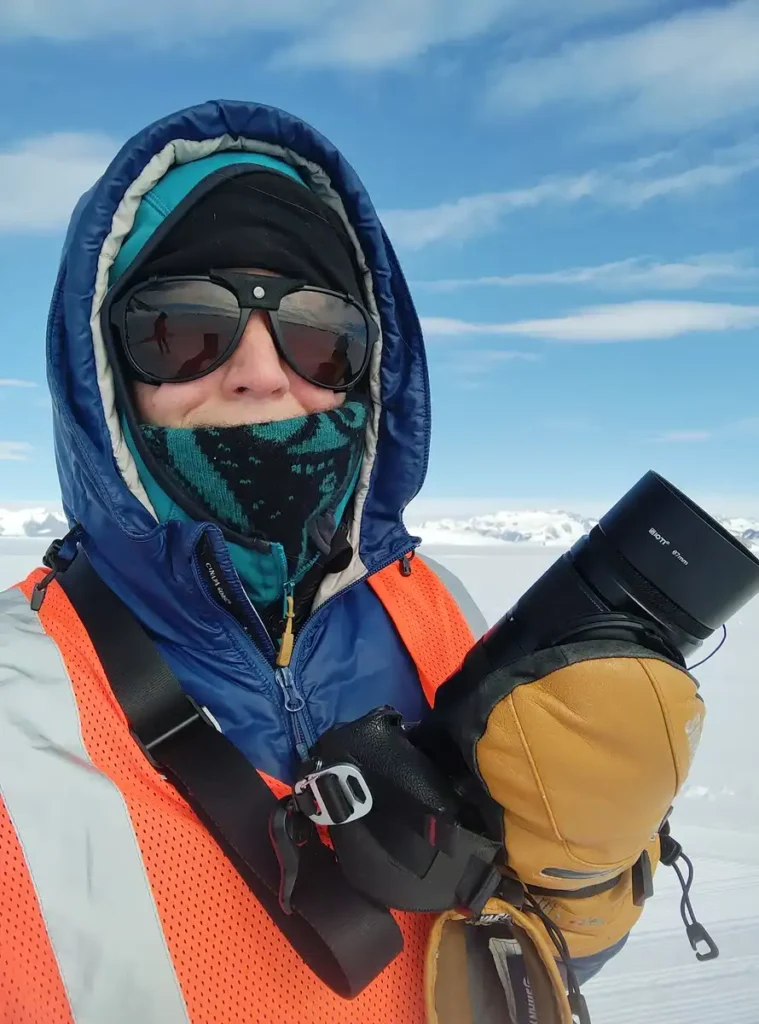
Q: How do you balance respect for wildlife with the drive to get the perfect shot in sensitive environments?
A: I always bring a zoom lens when photographing wildlife so I can observe without interfering. I want to experience the animals’ lives and capture those rare and special moments—but never at the expense of their wellbeing or proper conduct. No photo is worth causing stress or harm to the animals.
Q: What advice would you give to photographers who are drawn to remote or extreme locations but don’t know where to start?
A: Start by learning about the place—read books, attend talks, visit exhibitions, and follow people or companies on social platforms to learn from their experiences. When you finally get the chance to go to your dream destination, invest in the right gear and travel with people who have experience in that environment. Use your eyes, be present, and take your time. The best images often require patience and sometimes multiple visits, if the weather doesn’t cooperate.
“We must tell the world about the amazing wildlife that call this home… The polar regions are part of our planet, and we have a responsibility to look after them too.”
Q: The title Parents’ Sacrifice is very evocative—what inspired you to name it this way?
A: I think most parents can relate to the instinct to give everything they have to support the next generation. Even out here on the sea ice, in some of the harshest conditions on Earth, we see that same universal drive. These birds are literally giving everything to help their chick survive—sacrificing their own comfort and enduring the brutal Antarctic winter and spring just to incubate and raise a single egg.
Q: Finally, what are you working on now—or dreaming of photographing next?
A: My next expedition will take me from Iceland, via Greenland, and through the entire Northwest Passage, finishing in Alaska. I’m very excited about the journey and hope to experience incredible wildlife encounters and witness some truly wild, remote landscapes. If I could go on a photo expedition anywhere in the world, I’d love to explore Namibia and Botswana with my camera. The dream would be to wander through Namibia’s sand desert and see how it compares to the ice desert of Antarctica.
Some photographs by Aviaaja Schlüter

South Georgia – King Penguins, by Aviaaja Schlüter, Winner of Open Theme 2025 
Greenland – Zodiac Cruising, by Aviaaja Schlüter, Winner of Open Theme 2025 
Enderby Island – Giant Petrel, by Aviaaja Schlüter, Winner of Open Theme 2025 
Ellesmere Island – Polar Bear, by Aviaaja Schlüter, Winner of Open Theme 2025
